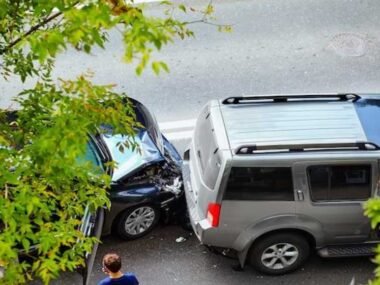Juvenile justice reform is the most important criminal justice issue of our time.
The system is completely broken. Kids are getting locked up, coming out worse than before, and taxpayers are footing the bill for failure. Between 2000 and 2022, youth held in facilities dropped 75% — but that’s just the beginning of the story.
Here’s the problem:
The current approach doesn’t work. Youth who get incarcerated are more likely to reoffend, drop out of school, and struggle with mental health problems for life.
But here’s the good news…
States that have embraced real juvenile justice reform are seeing incredible results. Lower crime rates, massive cost savings, and kids who actually turn their lives around.
What you’ll discover:
- Why the Current System is Completely Broken
- The Hidden Costs of Youth Incarceration
- Reform Strategies That Actually Work
- How Smart Communities Are Winning
Why the Current System is Completely Broken
Here’s something that will blow your mind…
The juvenile justice system was created to help kids. Instead, it’s become a pipeline to adult prison. Right now, up to 80% of incarcerated youth are rearrested within three years of release.
That’s not rehabilitation.
That’s systematic failure.
Think about it this way — if you hired a contractor to fix your roof and it leaked 8 out of 10 times, would you hire them again? Of course not. But that’s exactly what’s happening with juvenile justice.
The truth is brutal:
Locking up kids makes them worse, not better. Research shows incarcerated youth are more likely to drop out of school, struggle with employment, and develop serious mental health issues.
But wait, there’s more…
The system is incredibly biased. Black youth are nearly 6 times more likely to be incarcerated than their white peers. This isn’t about individual choices — it’s about systematic discrimination.
This racial disparity is something every experienced criminal defense attorney sees daily in courtrooms across America. These attorneys witness firsthand how the system treats young people differently based on race and family income. They understand that real reform isn’t just about fairness — it’s about building a system that actually works for everyone.
The Hidden Costs of Youth Incarceration
Want to know something that will make you angry?
Incarcerating youth costs a fortune. Some states spend over $200,000 per year to lock up a single child. That’s more than most families earn in an entire year.
And for what?
Most kids in juvenile facilities aren’t violent criminals. They’re there for non-violent offenses like drug possession, theft, or violating probation rules.
But the real cost isn’t just financial.
Every single day a child spends locked up, they fall further behind in school. They miss normal teenage experiences. They lose connections with family and friends. These are the building blocks of a successful adult life.
The damage doesn’t stop when they get out.
Youth incarcerated during adolescence are more likely to be reincarcerated in their twenties and thirties. They’re more likely to develop alcohol problems and need government assistance just to survive.
That’s not just tragic for the individual — it’s devastating for entire communities.
Reform Strategies That Actually Work
Ready for some incredible news?
States across the country are proving that juvenile justice reform works. They’re closing youth prisons, investing in community programs, and getting amazing results.
Take Georgia, for example.
In 2013, they enacted comprehensive reforms that saved the state $85 million over five years while reducing recidivism. They shifted $30 million from juvenile facilities to community-based alternatives.
Here’s what actually works:
Keeping Kids in Their Communities
Most youth don’t need to be locked up. They need support, education, and real opportunities. Community-based programs are more effective and cost about 75% less than incarceration.
Pretty incredible, right?
Addressing the Real Problems
Many kids in the system have experienced trauma, have mental health issues, or struggle with substance abuse. Instead of punishing them, smart states address these underlying problems with proper treatment and support.
Investing in Education and Job Training
Youth who stay in school and develop job skills are far less likely to reoffend. States that invest in education and workforce development see dramatic reductions in youth crime. Get this: youth who are employed have 30% lower recidivism rates than those without jobs.
This makes perfect sense.
When young people have legitimate opportunities to earn money and build careers, they don’t need to turn to crime. But the current system makes it harder for youth to succeed by removing them from school and their community support.
Restorative Justice Programs
These programs focus on repairing harm instead of punishment. They bring together victims, offenders, and community members to address the impact of crime and find real solutions.
How Smart Communities Are Winning
Juvenile justice reform isn’t just about helping individual kids — it’s about making entire communities safer and more prosperous.
Here’s why:
When communities keep youth local with proper support, they’re more likely to graduate high school, get jobs, and become productive citizens. That means less crime, more economic growth, and stronger families.
States that have embraced reform are seeing real results.
Maryland changed its approach to focus on treatment rather than punishment. They now prohibit incarceration for most misdemeanor offenses and probation violations.
The result?
Youth crime rates continued to decline while taxpayers saved millions of dollars.
But the benefits go way beyond just crime reduction.
Reform creates better outcomes for everyone. Families stay together. Kids get the help they actually need. Communities become safer. And taxpayers stop wasting money on approaches that don’t work.
What Needs to Happen Next
The evidence is overwhelming — juvenile justice reform works. But it requires political courage, community support, and sustained investment.
Here’s what smart states are doing:
States need to pass legislation limiting youth incarceration to only the most serious cases. They need to invest in community-based alternatives that address the root causes of delinquency.
Local communities need to support programs that give youth real opportunities to succeed. This includes education, job training, mental health services, and substance abuse treatment.
And everyone needs to change how they think about youth who make mistakes. These aren’t bad kids who deserve punishment — they’re young people who need help getting back on track.
Wrapping It Up
Juvenile justice reform isn’t just a policy issue — it’s about the future of our communities. There’s a choice to make: continue wasting billions on a system that doesn’t work, or invest in approaches that actually help young people succeed.
The data is crystal clear.
States that have embraced reform are seeing lower crime rates, better outcomes for youth, and massive cost savings. Meanwhile, states that stick with the old lock-them-up approach continue to see high recidivism rates and wasted taxpayer money.
The solutions are proven. Community-based programs work. Restorative justice works. Addressing root causes works. Keeping families together works. Investing in education and opportunity works.
The question isn’t whether juvenile justice reform is the right approach — it’s whether communities have the courage to implement it.
Kids deserve better. Communities deserve better. And the future depends on getting this right.
The time for half-measures is over. Real juvenile justice reform is happening right now in states across the country. The only question is: will more states join them, or will they keep repeating the same failed approaches?
The choice is clear.










